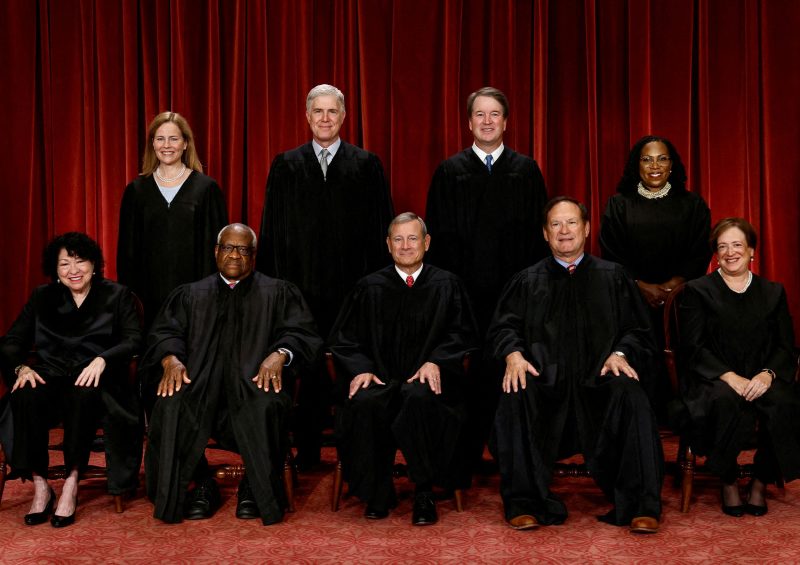Supreme Court justices on Monday returned to the bench to issue opinions in person for the first time in nearly three years — and went 1 for 2.
The court issued a unanimous ruling that went against a veteran who was seeking expanded benefits for a trauma he said he suffered years ago. The court also dismissed a case it heard only two weeks ago involving a law firm’s obligation to hand over documents to a grand jury. In the court’s parlance, it said the case was “improvidently granted,” meaning that after oral arguments, the justices found problems with resolving it.
It is typical that the first opinions issued in cases heard in a term are low-key and unanimous. But there was added interest Monday, because it was the first time that opinions were issued from the bench — rather than simply appearing on the court’s website — since the coronavirus pandemic disrupted the court’s practices and traditions in March 2020.
And it was apparently the longest the court has ever gone before deciding an argued case.
“The 112 days between the first oral argument and the first opinion of this term set a new record for the longest time this has ever taken the justices,” Supreme Court scholar Adam Feldman wrote on his blog Empirical Scotus, adding “if we look all the way back to 1791 … the Court has never taken anywhere near as long to release its first opinion.”
There could be numerous reasons for the slow start, and the court’s investigation of the leak last May of the draft of the opinion that overturned Roe v. Wade is probably a good place to start assigning blame for the sluggish releases.
Gail A. Curley, the court’s marshal, said the investigation was unable to identify the leaker to Politico and recommended stricter controls for handling sensitive court documents, some of which have probably been implemented and may have delayed the deliberative process. Moreover, hard feelings seem to still exist among the justices over the decision overturning nearly 50 years of Supreme Court precedent, and may hinder unanimity.
And the court’s calendar this term was frontloaded with controversial cases — affirmative action, LGBTQ and religious rights, voting and election controversies — that will probably take far longer to decide and write.
The veteran’s disability claims case was argued on Oct. 4, the second day of the term. Adolfo Arellano said he suffered a severe mental health condition as a result of his service before he was discharged from the Navy in 1981. But he did not file a claim until 2011. While he received benefits going forward, he ran up against a law that says to receive retroactive benefits, a claim must be filed within one year of discharge.
Justice Amy Coney Barrett wrote that Arellano and others in his situation might be deserving, but that Congress was clear on the deadline. “Congress could have designed a scheme that allowed adjudicators to maximize fairness in every case,” Barrett wrote. But Congress opted for rules that “prioritize efficiency and predictability.”
Barrett joined the court in October 2020, so it was her first time summarizing from the bench an opinion she wrote. She did so in front of only a bare majority of her colleagues: Justices Samuel A. Alito Jr., Elena Kagan, Brett M. Kavanaugh and Neil M. Gorsuch skipped the short session (which isn’t unusual when the justices are only handing down opinions, instead of also hearing arguments).
Chief Justice John G. Roberts Jr. announced that the court was dismissing the case about the disclosure of legal documents that intermingle possible evidence with legal advice that carries attorney-client privilege. He did not say why, but at oral argument in the case called In re Grand Jury, the justices had trouble deciphering how much of a difference the lawyers arguing the case had identified.
At one point, Kagan indicated there was less to the case than met the eye. She asked one lawyer to comment on “you know, the ancient legal principle, if it ain’t broke, don’t fix it.”

